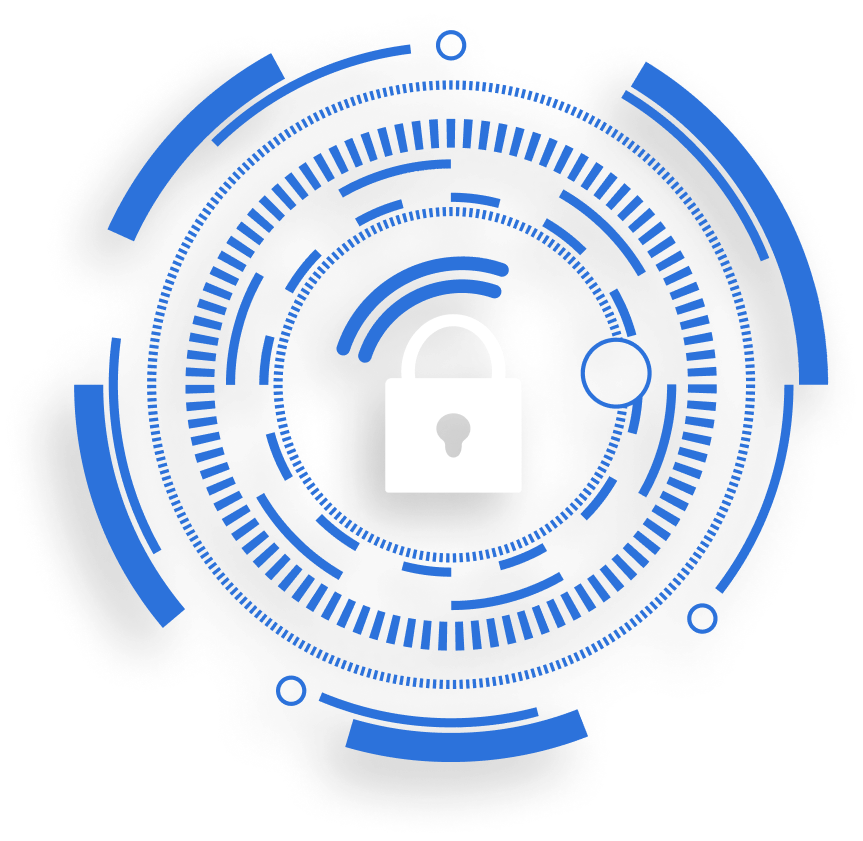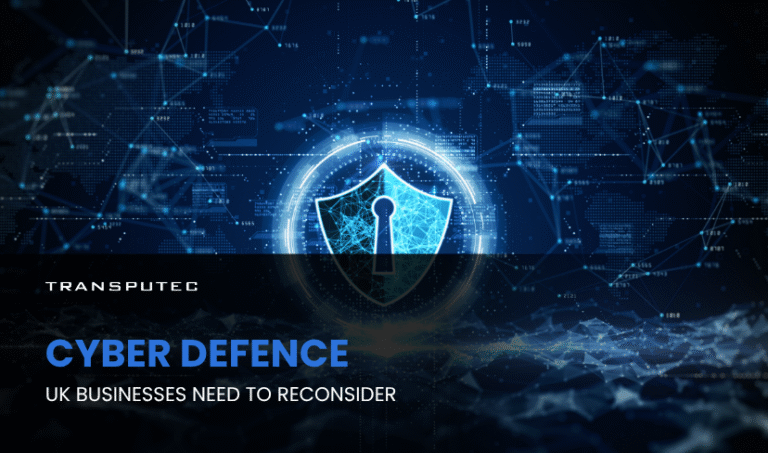Written by KRITIKA SINHA | TRANSPUTEC
A stressed employee receives a call from “IT Support,” asking for urgent access to their system due to a security breach. In a moment of panic, they provide credentials, and within minutes, cybercriminals have full control. This isn’t fiction. It’s the reality of modern-day Help Desk Scams.
What makes these scams so dangerous is their familiarity. The attackers mimic genuine help desk practices with unnerving accuracy, tricking employees who are simply trying to do their jobs. As cyberattacks become more sophisticated, Help Desk Scams have evolved into one of the most effective infiltration methods used by hackers, costing businesses more than just data. Trust, compliance, and operations are all at stake.
This blog unpacks the full scope of Help Desk Scams, what they are, how they work, the real-world consequences, and most importantly, how to protect your organisation. We’ll share how Transputec is helping companies stay several steps ahead.
What Are Help Desk Scams?
Help Desk Scams are a type of social engineering attack where cybercriminals impersonate IT support personnel. The goal is to manipulate employees into revealing confidential data, usually credentials, or giving remote access to internal systems.
They’re often executed via:
- Phone calls pretending to be IT support
- Phishing emails with fake help desk links
- Live chat impersonations through spoofed websites
- Remote desktop software abuse
Unlike brute-force attacks, these scams rely on exploiting human behaviour. A 2023 report by Proofpoint found that 74% of data breaches involved some form of social engineering, with Help Desk Scams ranked among the most damaging.
Why Help Desk Scams Are So Effective?
1. They Exploit Trust in Internal IT Teams
Employees naturally trust their internal IT departments. When someone calls or messages claiming to be from the “Help Desk,” staff are less likely to question it, especially if the attacker uses familiar jargon or references a recent IT issue. This inherent trust lowers the guard of even well-meaning and security-aware employees.
2. They Create a Sense of Urgency
Scammers often use high-pressure tactics, such as claiming there’s a security breach, a virus, or account compromise that needs immediate action. This urgency causes panic, and employees may bypass usual verification steps or protocols in their rush to resolve the supposed issue.
3. They Mimic Real IT Processes
Help Desk Scams are carefully crafted to look and sound legitimate. Attackers spoof email addresses, phone numbers, and even internal ticketing formats to appear as genuine support staff. They might use the names of real IT employees or reference actual software used within the company, making it hard to distinguish fake from real.
4. They Target Human Error
No matter how advanced a company’s security technology is, human error remains a critical vulnerability. Help Desk Scams don’t need to break through firewalls or encryption, they just need to convince a person to hand over a password or click a malicious link. That’s why they’re so successful; they bypass tech defences entirely.
5. They Go Undetected Until It’s Too Late
Unlike malware or ransomware, which often trigger alerts, Help Desk Scams can appear completely normal. If an employee unknowingly gives access to a scammer, the breach might not be detected for days or weeks. By the time the organisation realises, sensitive data may already be compromised or systems infiltrated.
How to Recognise a Help Desk Scam?
Help Desk Scams are tricky because they look like real IT support. But there are clear warning signs. Here’s how you can spot them before it’s too late:
1. The Call or Message Feels Urgent or Pushy
If someone says, “You must act right now or your account will be locked!”—be careful. Real IT staff usually stay calm and follow a clear process. Scammers rush you so you don’t stop to think.
2. They Ask for Passwords or Login Details
A real help desk will never ask for your password. If someone asks you to type or share your login details, it’s a major red flag. Always say no and report it.
3. You Didn’t Ask for Help
If you get a call or message out of nowhere claiming there’s a problem with your computer, but you didn’t report any issue, be suspicious. Scammers often make up fake problems to trick you.
4. They Ask You to Download Software or Click Links
Scammers might say, “Please install this remote support tool” or “Click this link to fix the issue.” Don’t do it unless you’re 100% sure it’s from your real IT team. These downloads often let hackers into your computer.
5. The Caller or Email Address Looks Strange
Even if it looks official at first glance, check the details. Is the email slightly misspelt? Does the caller ID look unusual? For example, a real email might be [email protected], but a scam email could be [email protected], easy to miss.
6. They Refuse to Verify Their Identity
If someone says they’re from IT but won’t tell you their name, department, or provide proof, don’t trust them. Real IT teams should be able to confirm their identity and follow internal procedures.
7. The Conversation Feels Off
Trust your gut. If something feels strange—maybe the person is too informal, uses odd phrases, or doesn’t sound like your usual IT staff, it’s okay to pause and check with your manager or the real IT team.
How to Defend Your Organisation from Help Desk Scams?
Help Desk Scams can cause serious harm stolen data, lost money, and damaged trust. But the good news is: there are many smart and practical ways to stop them before they cause damage. Here’s how your organisation can stay protected:
1. Teach Your Employees What to Look Out For
Your employees are the first line of defence. If they don’t know what a Help Desk Scam looks like, they can easily fall for it. Regular training sessions help them:
- Spot scam calls and emails
- Know what to do if something seems suspicious
- Understand that real IT support will never ask for passwords
Use examples and even run fake scam drills to test how your team responds.
2. Use a Clear Help Desk Verification Process
Create a simple rule: every IT support request must follow a verification process.
For example:
- Employees must check if there is a real support ticket in the system
- IT staff must confirm their identity through official channels
- No action should be taken without internal confirmation
This way, even if a scammer calls, employees will know not to trust them blindly.
3. Turn On Multi-Factor Authentication (MFA)
MFA adds an extra step to logging in, like sending a code to your phone or requiring a fingerprint. Even if a scammer steals a password, they can’t get in without the second step.
Use MFA for:
- Email accounts
- Remote logins
- Important business applications
It’s one of the most effective ways to stop attackers.
4. Limit Access with Least Privilege
Not every employee needs access to all systems. Set permissions based on what people need for their work. This limits the damage if someone accidentally gives access to a scammer.
- Give only the minimum level of access needed
- Review access regularly
- Remove access immediately when someone leaves the company
5. Use Secure Remote Access Tools
Scammers often ask people to install unsafe remote software. Avoid this by using approved, secure remote support tools that only IT staff can control.
Make sure:
- The software requires a login and approval before connecting
- Sessions are recorded and monitored
- Employees know not to use unapproved tools
6. Monitor All Help Desk Activity
Using tools that track help desk interactions can help spot suspicious behaviour early. For example:
- Unusual login times
- Support tickets opened from unknown locations
- Multiple password reset requests in a short time
Having a Security Operations Centre (SOC) or working with a provider like Transputec means you can catch threats fast and act before harm is done.
7. Create a “Report Suspicious Activity” System
Make it easy for employees to report anything that doesn’t feel right. A fast-reporting system means:
- The IT team can act quickly
- Potential scams are stopped early
- Staff feel confident and supported in speaking up
You could use a special email address, phone number, or online form that’s monitored closely.
8. Partner with a Cybersecurity Expert Like Transputec
Cybersecurity can be complex, especially as scams keep changing. A trusted partner like Transputec can help you:
- Stay ahead of threats with real-time monitoring
- Train your team with custom awareness programmes
- Run simulated attacks to test your defences
- Recover quickly if something goes wrong
How Transputec Helps Combat Help Desk Scams ?
Transputec provides a holistic solution to help businesses mitigate, detect, and prevent Help Desk Scams.
1. 24/7 Managed Security Services
Our SOC (Security Operations Centre) monitors all help desk activity in real time, flagging anomalies instantly.
2. Employee Cybersecurity Training
We offer tailored awareness programs to help staff understand and avoid social engineering tactics.
3. Secure Remote Access Tools
Transputec ensures remote access protocols are secured with biometric and multi-factor authentication.
4. Cyber Threat Simulation
We run controlled scam simulations to help your team learn in a safe environment and measure response efficiency.
5. Post-Incident Support
If an incident occurs, our cyber response team helps contain, investigate, and recover your systems with minimal downtime.
Conclusion
Help Desk Scams are no longer rare events, they’re part of an evolving cyber threat landscape designed to exploit the human side of technology. With millions lost annually and reputations on the line, businesses must treat help desk security as a strategic priority.
You’ve learnt what Help Desk Scams are, how they work, and most importantly, how to stop them. From staff training to securing remote access, and from zero trust protocols to real-time monitoring, there are powerful steps you can take today.
Contact us to connect with a Transputec expert and get started on protecting your organisation from Help Desk Scams.

Secure Your Business!
Ready to explore how we can enhance your security posture? Contact us today to speak with one of our experts.
FAQs
1. What exactly is a Help Desk Scam?
A Help Desk Scam is a type of cyberattack where fraudsters impersonate IT support staff to trick employees into giving away login credentials or access to sensitive systems.
2. How can Transputec help prevent Help Desk Scams?
Transputec offers proactive monitoring, secure remote access tools, and cybersecurity awareness training. Our 24/7 SOC ensures every help desk interaction is logged, verified, and secured.
3. What should employees do if they suspect a Help Desk Scam?
Immediately report the interaction to IT security. Transputec clients can use our secure alert system to flag and escalate suspicious requests in real-time.
4. Are small businesses at risk from Help Desk Scams?
Absolutely. Small businesses are often easier targets due to less mature security infrastructure. Transputec offers scalable solutions for businesses of all sizes.
5. How long does it take to implement Transputec’s protection solutions?
Most implementations are completed within 2-4 weeks, depending on the business size and infrastructure. Our team ensures a smooth transition with minimal disruption.




